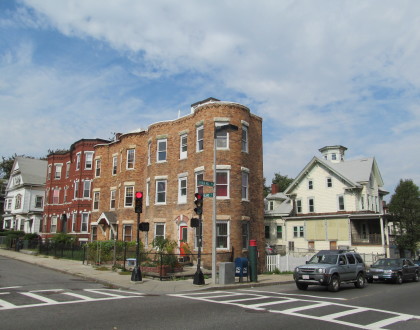Pursuing Hope Amidst Mattapan’s Tragedy

Earlier this week, yet another incomprehensible act of violence left us dumbfounded. Recently we dealt with the details of the murder of Richel Nova. Now we must deal with the shocking massacre of four—including a toddler—in Mattapan. The trauma this is causing our city will have long-lasting consequences.
Occasionally, violent acts are disturbing enough—like the Nova and Mattapan homicides—that they affect the city as a whole. We all share the sentiments of remorse and must overcome the distress it causes—eerily enough bringing us together.
However, most acts of violence barely make the headlines and affect only the direct community where the act was committed. This often leaves local residents alone in their grief and tribulations—isolating them from the rest of the city.
A Boston Foundation report shows that about 80% of violent crimes in the city of Boston take place in the neighborhoods of South Dorchester, Lower Roxbury and Mattapan. These neighborhoods are predominantly home to Boston’s African-American community.
These neighborhoods share another common reality: poverty plagues most residents.
Statistically speaking, the 2010 Boston Health Report, shows that the similarities between these neighborhoods run even deeper. In a study of Boston Public High School students, the report shows that the Dorchester, Roxbury and Mattapan youth have the least trust in the police – 34%, 33% and 32% respectively – compared to 43% of Boston youth overall and 80% of predominantly white West Roxbury.
Similarly, these neighborhoods are most likely to withhold information from law enforcement personnel. Forty-one percent of Mattapan youth claim that they would not report a crime. Dorchester and Roxbury follow at 37% and 35%.
Apathy and a lack of civic engagement from these communities, however, do not reflect an inherent culture in the neighborhood, but rather a reaction to the reality that surrounds it: The report indicates that 56% of black and 52% of Latino students have had a close family or friend killed, compared to 17% of white students.
In these neighborhoods, the idea of justice and hope is hanging by a thread.
But we should not waste our energy and efforts by pointing the finger of blame. Instead we should invest our attention in reversing these trends.
There is reason to be hopeful.
In recent years, our city has taken steps to reach out to these neighborhoods. Notable among numerous efforts is the StreetSafe campaign—a Boston Foundation initiative—which has mobilized street-workers to engage some of the most at-risk youth in these neighborhoods. Meanwhile, Boston PACT is working with families that have a history of gang affiliations, with the hope that, through social support, they can turn their backs on gang life.
Here at YWCA Boston, we have been working to improve the lives of Mattapan, Dorchester and Roxbury residents. We are entering our twentieth year of providing critical health education to mothers and women.
And in the last year – with seed funding from the Boston Foundation and ongoing affiliate support from the United Way of Massachusetts Bay and Merrimack Valley- we have re-initiated the city’s youth/police dialogues initiative, trying to build more positive relationships between at-risk youth and the police who serve them.
Having planned for several months, we will soon be facilitating a dialogue between police officers and Mattapan youth.
This Saturday, as an outcome from a summer YWCA Grove Hall youth/police dialogues, teens and police are coming together to provide the neighborhood with a Peace Zone cookout at the Boys and Girls Club in Roxbury.
We do this work in the hope and with the commitment that we can help build trust and strengthen these grieving communities.
